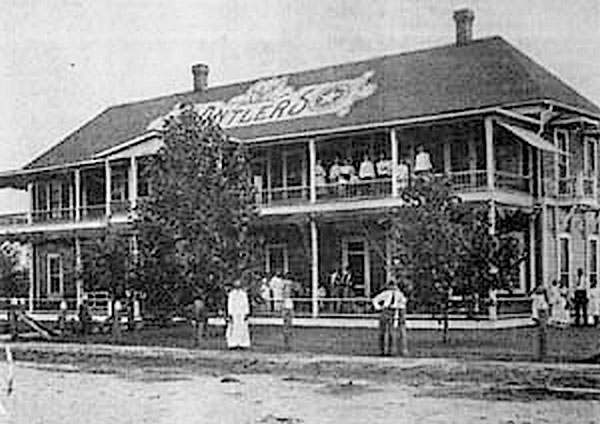
It’s 1910.
The drummer* stepped off the westbound Austin & Northwestern Railroad train onto the wet wooden platform, a carpetbag in one hand, a leather-sheathed cardboard sample case in the other, wishing he had booked another night in Austin at the Depot Hotel. He was glad it was only sprinkling when he walked the few blocks from his hotel to Austin’s Union Station. With a sigh he set both down, pulled his coat tighter around him in a useless attempt to set off the bone-chilling dampness of the evening. If it weren’t for the rain – a downpour of the kind seemingly known only to Central Texas – and a washed out bridge a few miles up the line, he’d be spending the night in Llano at the Dabbs where he had reserved a room. Picking up his bags he fell in with his fellow passengers, all but a few stranded like himself, toward the large hotel across the tracks.
Stepping across the wide porch and into the lobby damp from both the elements and dripping clothes, the drummer made his way to the front desk to see about a room. Before a word was out of his mouth, the clerk shook his head, “Sorry not a room in the house, nor one in any of the cabins. The best I can do for you is a hammock on the upstairs porch, if that will do? At least some shelter from the rain if not the dampness.”
“Is there nowhere else where I might seek lodging?” the drummer asked.
“Sorry, my friend, the Antlers’ upstairs porch it is, unless you can find someone out there in a tent to take you in.”
Resigned to a restless, if not sleepless night, the drummer reached into his coat pocket to extract his money. “How much?” he asks. Paying up, the bar beckons; a shot of whiskey to shake off the dampness.
Unnoticed by the drummer, another had detrained, and followed the drummer into the hotel. This fellow, like the drummer, had caught the train in Austin, although Kingsville and the Antlers, not Llano, was his destination. Without hesitation, this rather dapper fellow moves through the lobby, out the rear door, hat pulled down tight over his head to ward off the rain, and makes for a set of steep stairs at the rear of the hotel, ultimately making his way into the room at the bottom of stairs. Taking off his coat and shaking off the rain as he does so, he turns to the porter by the door. “Good evening … a busy night I see.”
“Yes sir, the rain sees to it. Whiskey, sir?”
“Yes, please, thank you.”
Turning from the porter, he silently surveys the room looking closely at the faces. “Fancy a game of cards?” he asks the drummer.
The Antlers Hotel – Kingsland, Texas
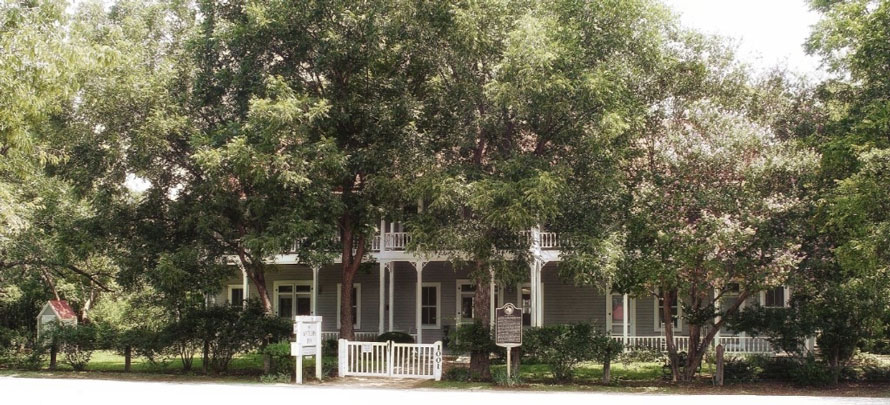
The arrival of the Austin & Northwestern Railroad (A&NW) was a godsend to the little isolated hamlet of Kingsville, as it was then called. With the rails came commerce, and more importantly, city folk seeking to enjoy the confluence of the Llano and Colorado Rivers. In 1892, the Austin & Northwestern Railroad extended their tracks to Llano to serve the rich granite quarries. In the process, they passed through Kingsville and built a depot and a section-house, along with a bunkhouse for crews across the tracks—and eight years later a resort, The Antlers.
It is at this depot that our drummer detrained and crossed the tracks to the Antlers Hotel.
The Antlers, built in 1900-01, opened in May of ’01 and was one of the grand railroad resort hotels of the era. Built by the Austin & Northwestern Railroad , the hotel catered to Austinites and other “City Texans” seeking to escape the summer heat for the coolness of the countryside, and maybe to fish and swim in the Colorado River, which flowed just a short walk away. With the railroad running excursion trains from Austin, and advertising heavily, the hotel drew clientele from throughout Texas, the Midwest and South. And, yes, sometimes the hotel was so full that the only accommodation available was a hammock on the porch. The rear basement, the “dapper gentleman’s” destination, featured a single chair barber shop and a gaming room. Rumor has it, that an inquiring gentleman could possibly employ, with a tip to the bartender or porter, the company of a lady. Whether our drummer did so, we will never know. More than likely, the “dapper gentleman” did.
The hotel, featuring gas lighting throughout and a lobby phone, was situated on the peninsula where the Llano and Colorado Rivers met, and oriented to capture the breeze that blew off the water. The structure itself was L-shaped, one room wide, and surrounded by lower and upper porches. Every ceiling, including those of the eleven guest rooms, was 12-feet high. Transom windows, large windows, and many doors were situated to move the breeze through the hotel. Porches and balconies were lined with chairs and, often, hammocks. The hammocks not only accommodated the overflow, but also quests to sleep outside when their rooms became too stuffy during the hot Texas Hill Country summers.
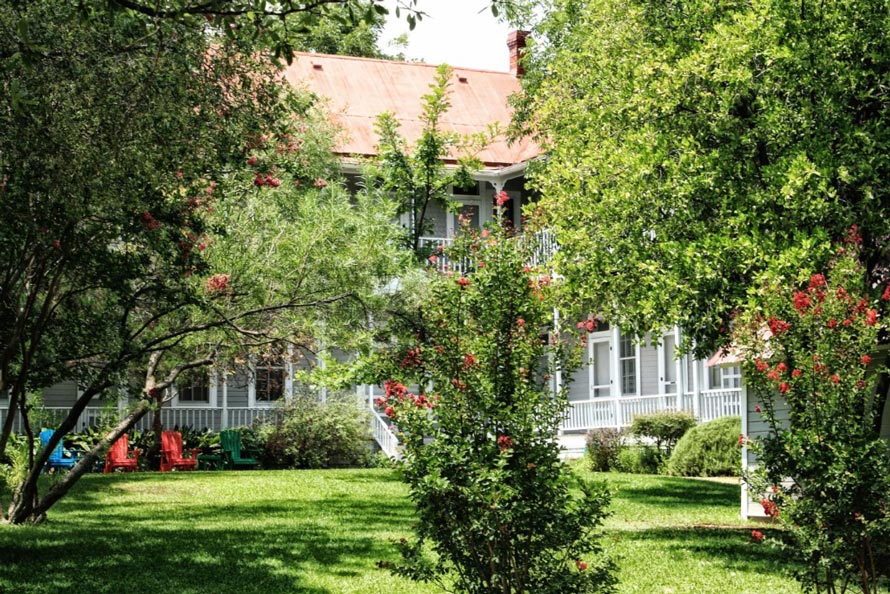
Situated behind the hotel was “Camp Pajama,” a campground with cabins and tents alongside the Colorado River, hence the clerk’s suggestion to find a camper to take our drummer in. Another phone was placed in the campground allowing campers to order meals and then pick them up from the hotel kitchen.
The Antlers remained popular until 1922, when a fire destroyed much of Kingsland. The depot was engulfed, as was the section master’s home and a large Chautauqua-like wooden pavilion for dances and community gatherings. Fortunately, The Antlers was spared.
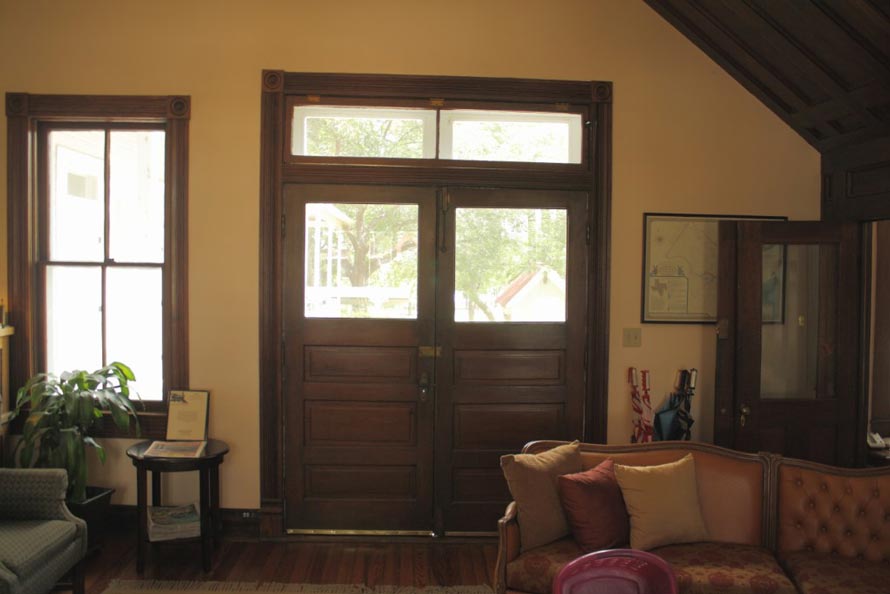
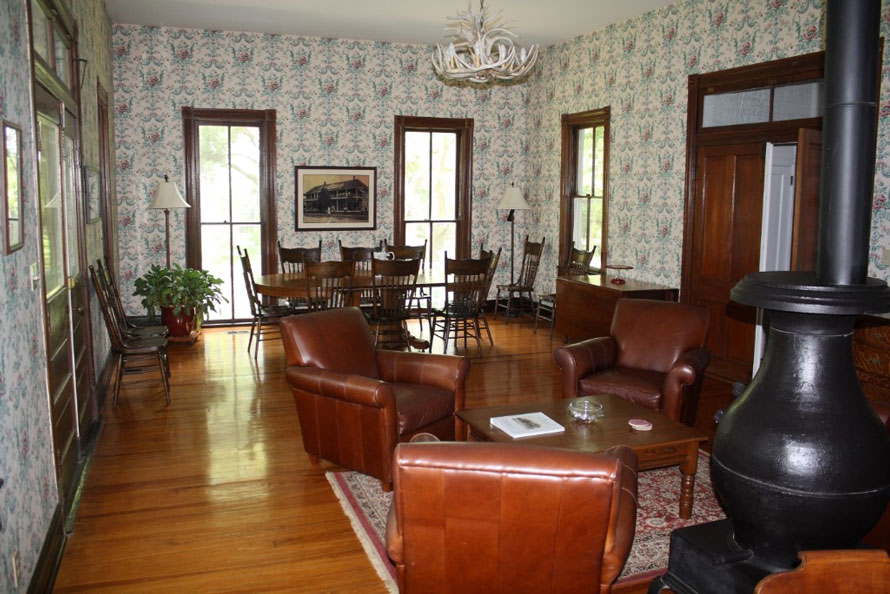
Along with Kingsland, after the fire The Antlers rapidly declined. Adding to the decline was the growing popularity of the automobile and the grading of highways. In 1923, an Austin family purchased the resort to use as a personal family retreat; it remained in the family for 70 years.
In 1993, Barbara and Dennis Thomas purchased the hotel and undertook a two-and-a-half-year renovation project. During that time, they purchased several cabooses for lodging, and the Muldoon Depot, which was relocated to the resort. The Antlers reopened as a hotel on Sept. 1, 1996. The old railroad crew bunkhouse next to the hotel provided additional rooms.
Today, under the 2015 ownership of Rick Gregory and Drew Gerencer, the hotel remains pretty much as it was when it was built. The original pine floors have been refinished. Most of the original glass, with its wavy imperfections, is still extant. And the vertigo inducing balcony floors still slope.
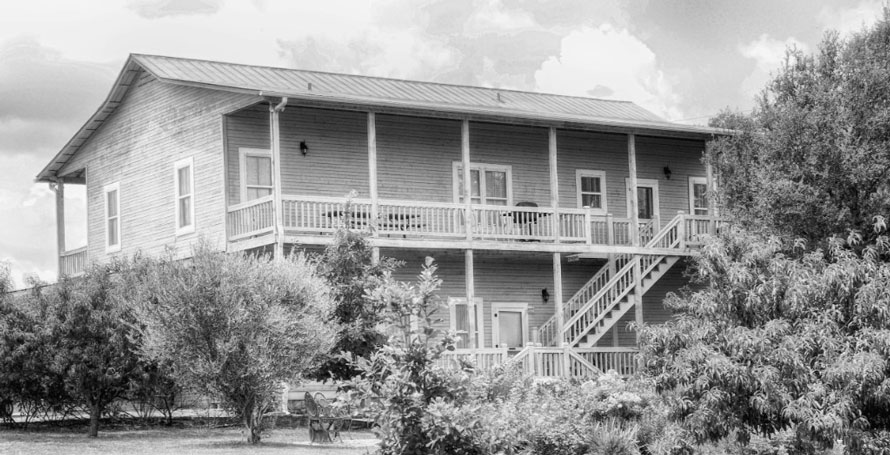
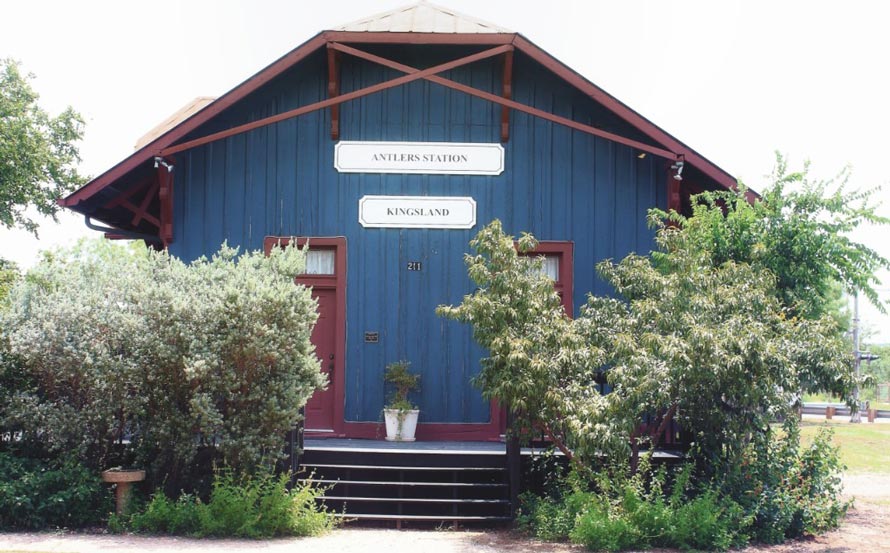
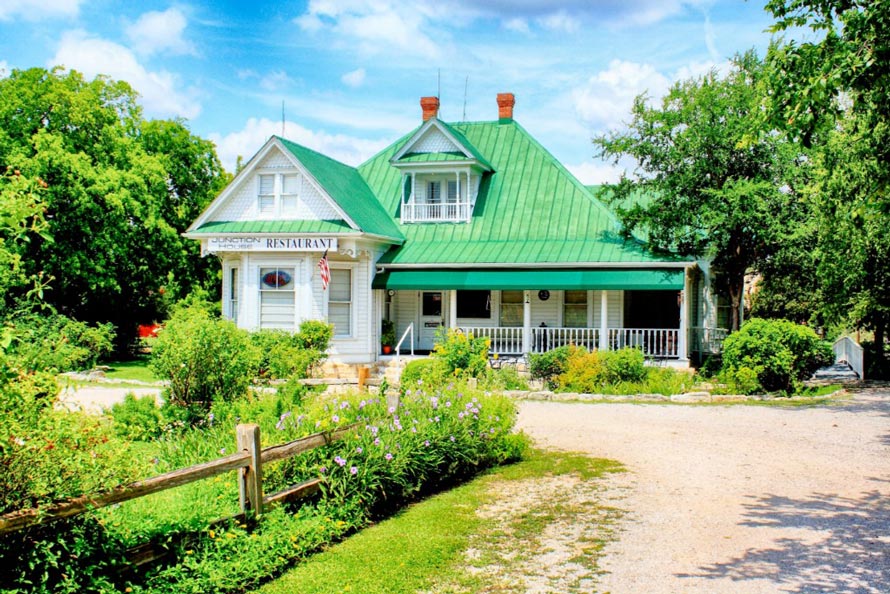
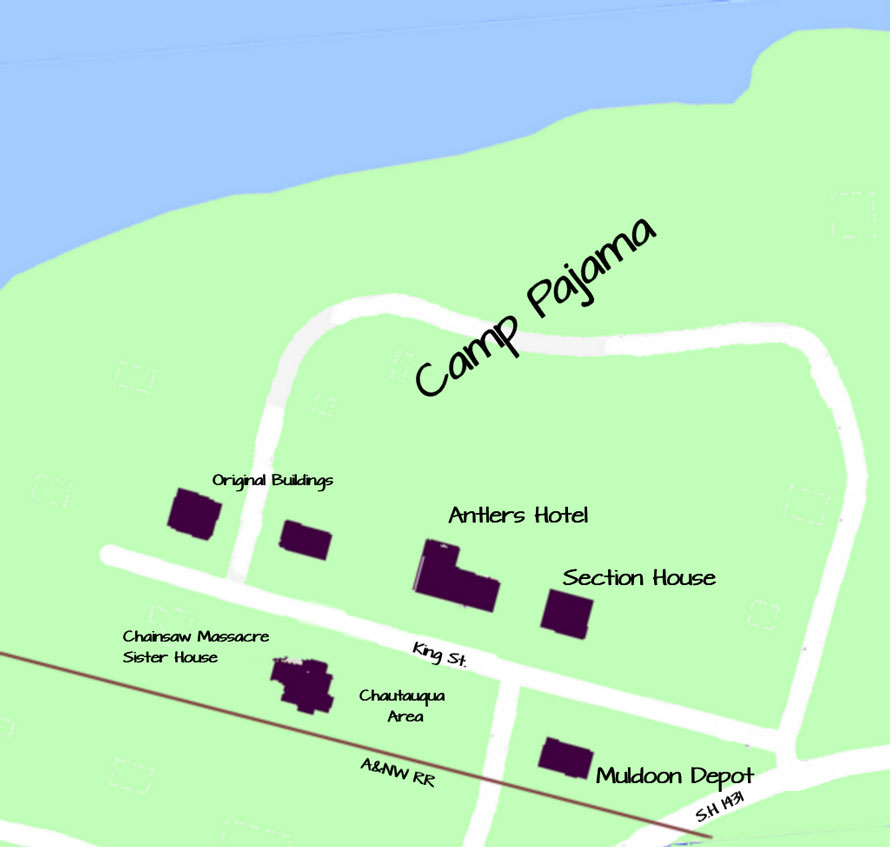
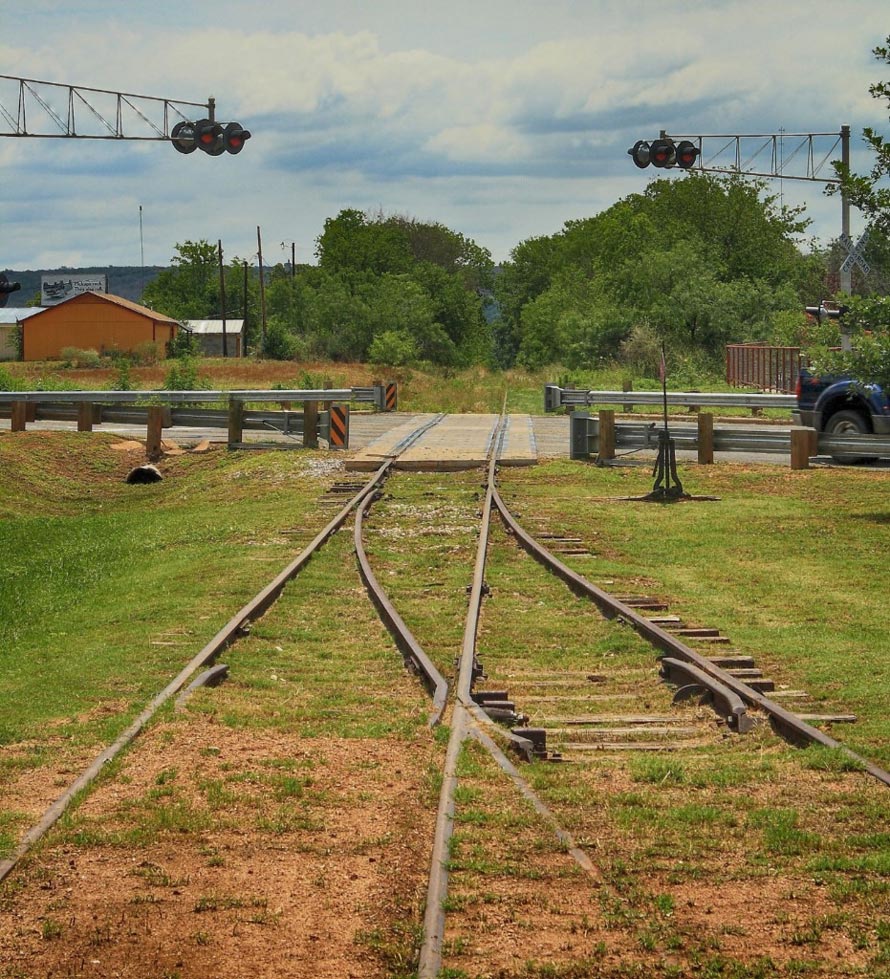
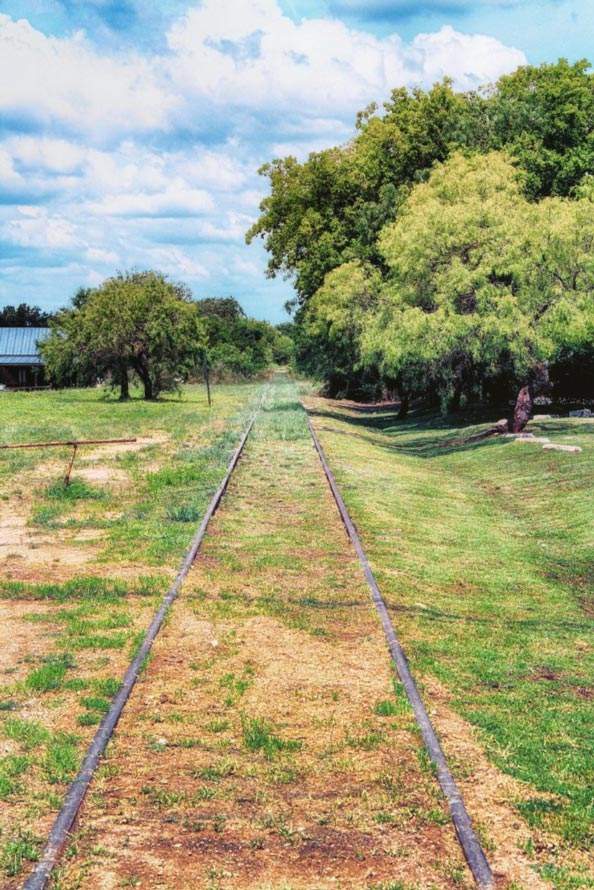
The Dabbs Hotel – Llano, Texas
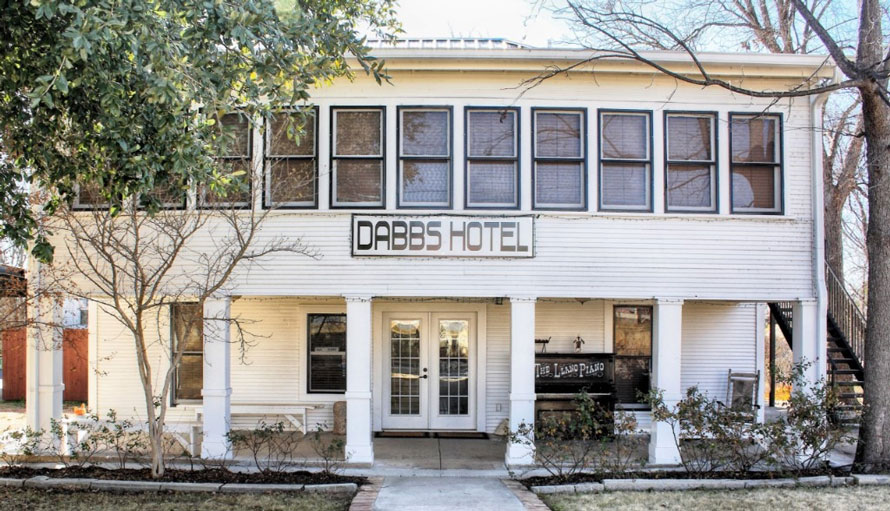
If our drummer’s train had not been halted by the rain and a washed-out bridge, he would have spent the night at the Dabbs Hotel in Llano (where he had a reservation), just across from the Llano depot. Built in 1907, the Dabbs was one of the many hotels lining the Llano River. Most of them served railroad travelers, fishermen, and hunters, but the Dabbs in particular, located next to the depot and rail yard, also served A&NW train crews. The fact that our drummer was planning to stay there indicates his relative lack of finances. (We can only hope that he stayed away from the cards at the Antlers.) A much better hotel was just up the street, the elegant Algona.
Llano was the end of the rail, on the edge of the Texas Hill Country wilderness. To travel further west to sell his wares our drummer would require passage on a coach line. At the time Llano was a bustling frontier community, known as the “City of Crystal,” reaping the benefits of the crystal-rich Granite Highlands.
Had our drummer made it to the Dabbs, he might have run into Bonnie & Clyde, who were said to favor the Dabbs when in Llano. The Dabbs has a rich heritage of being “home” for a night or two, not only to rail workers and drummers, but also to bank and train robbers, lawmen and killers, prospectors and miners, itinerant musicians and poets, patent medicine men and quacks. For a short while it was a hotel and bordello simultaneously.
The Dabbs’ location was almost perfect: across from the depot and rail yards, not far from the town center and saloons, and sitting on a bluff overlooking the clear Llano River, with even a spot to bathe if one desired to do so. The hotel itself was a simple rectanglular, two-story building with six rooms and an upstairs “sleeping porch,” along with a back porch overlooking the Llano River.
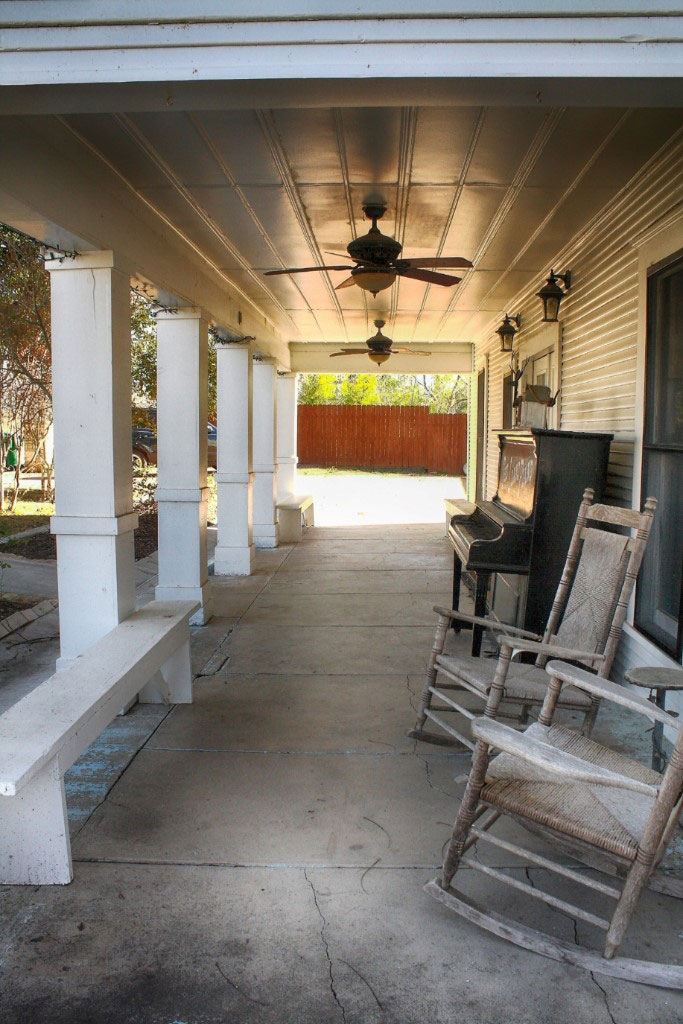
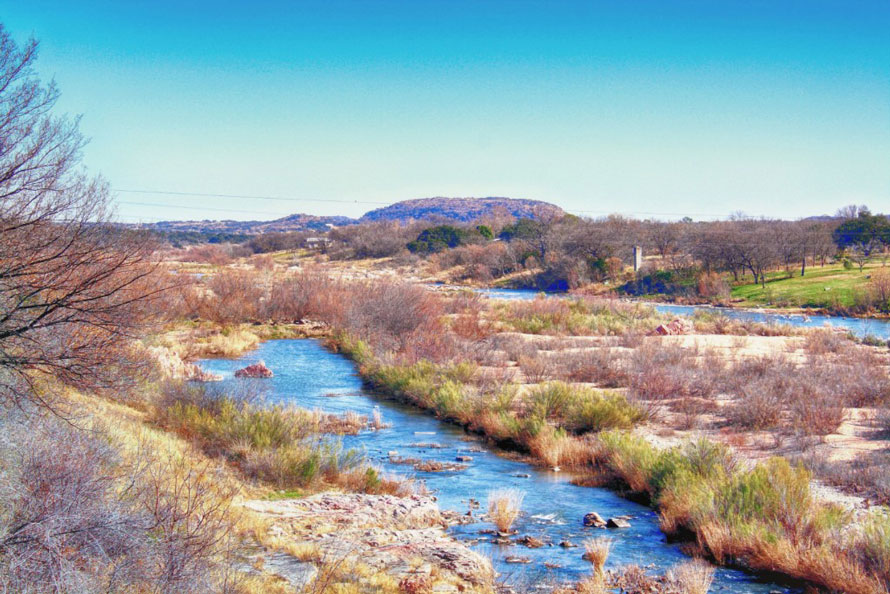
Although a train rarely makes it into Llano these days, the Dabbs Hotel sits proudly as the last of Llano’s riverfront hotels and her last extant railroad hotel. Currently it functions as a bed & breakfast.
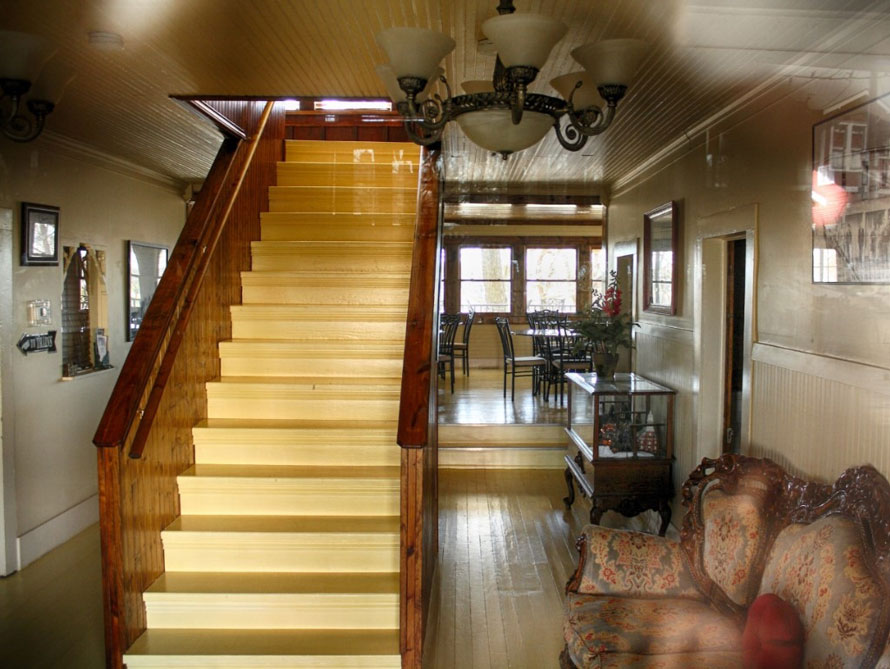
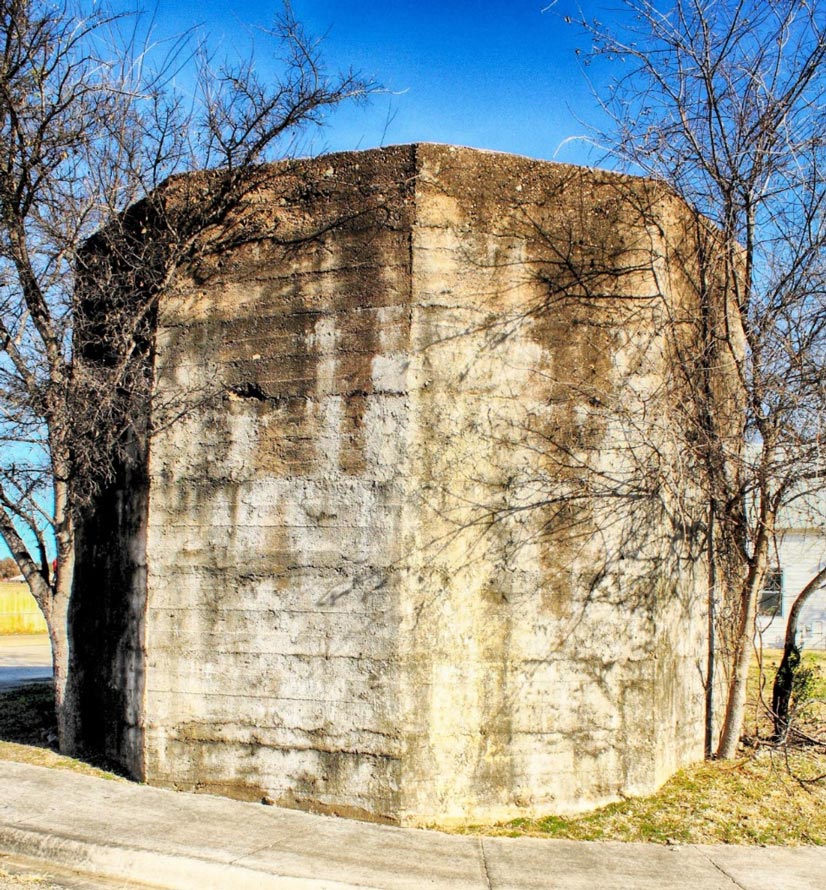
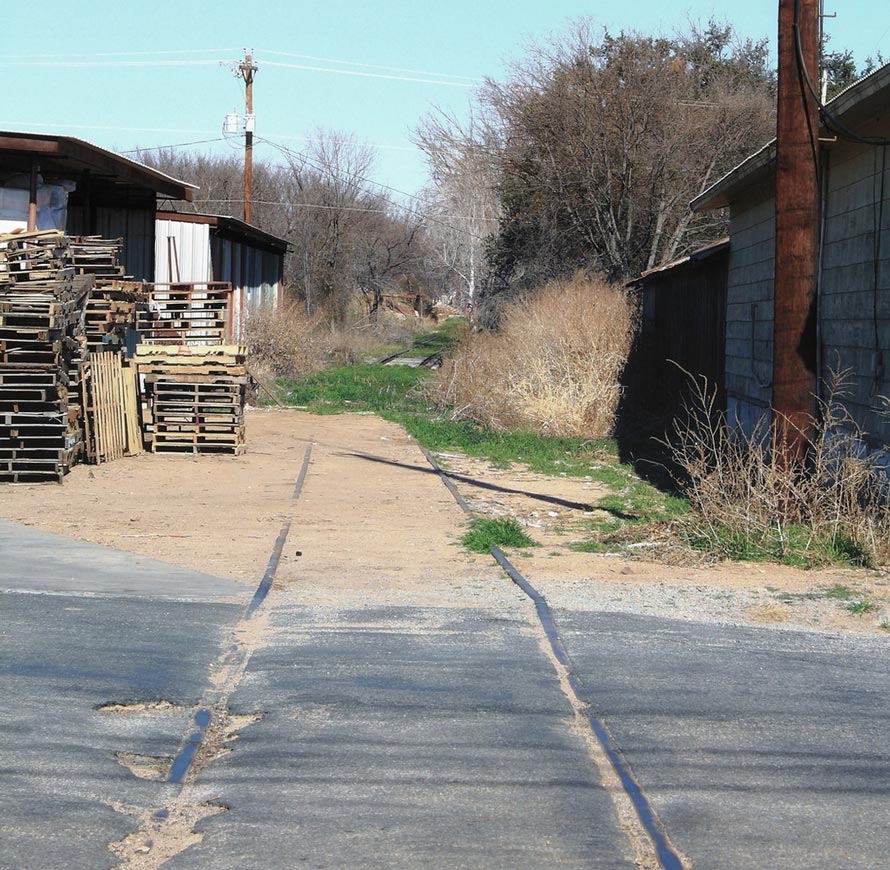
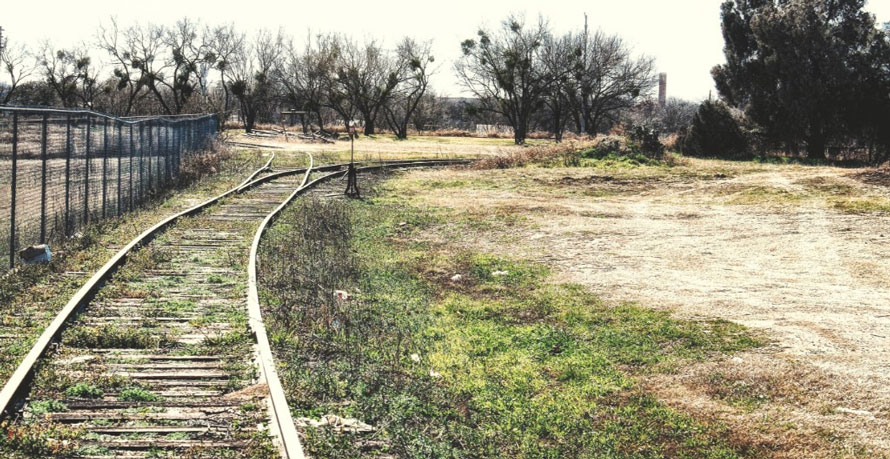
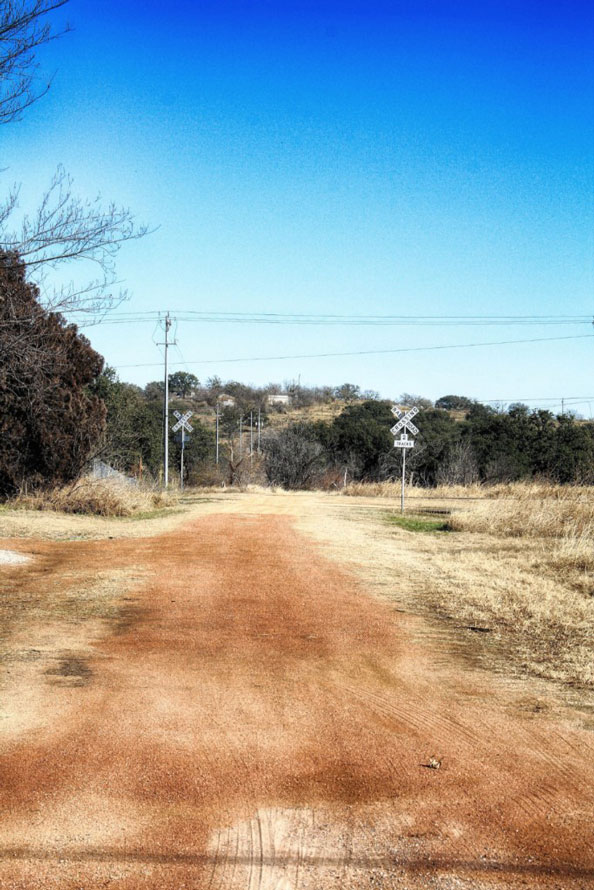
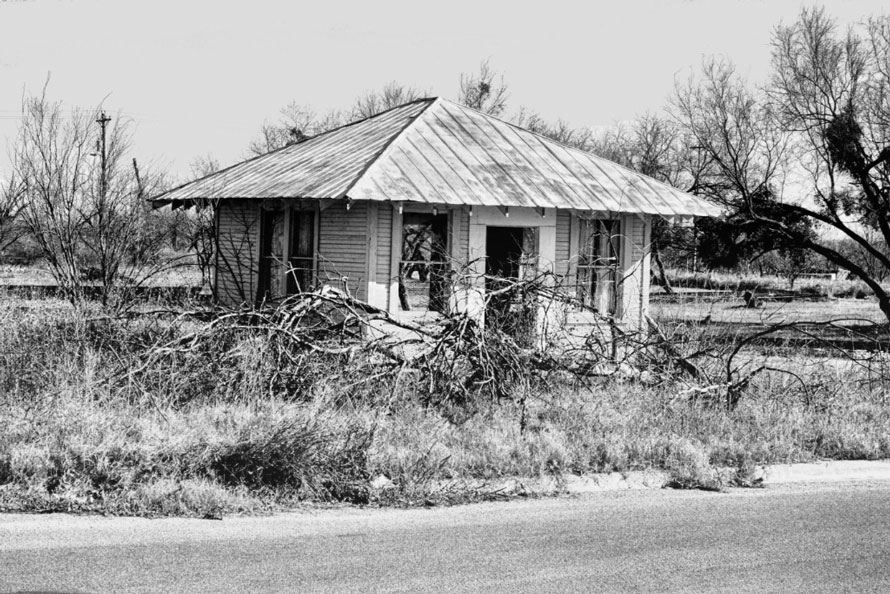
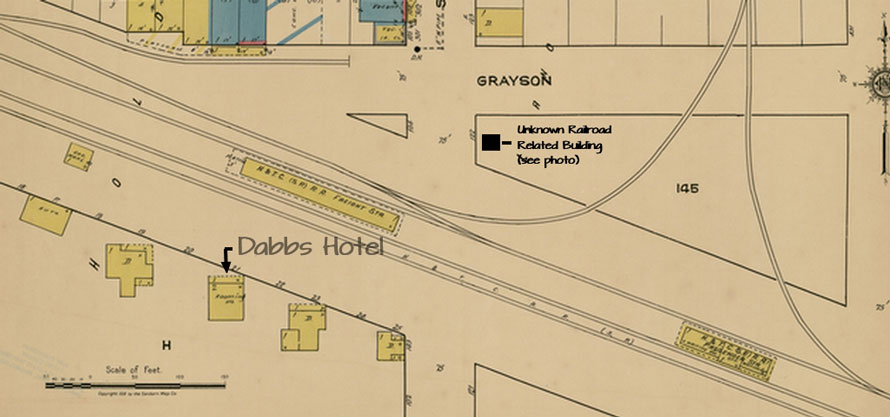
The Depot Hotel – Austin, Texas
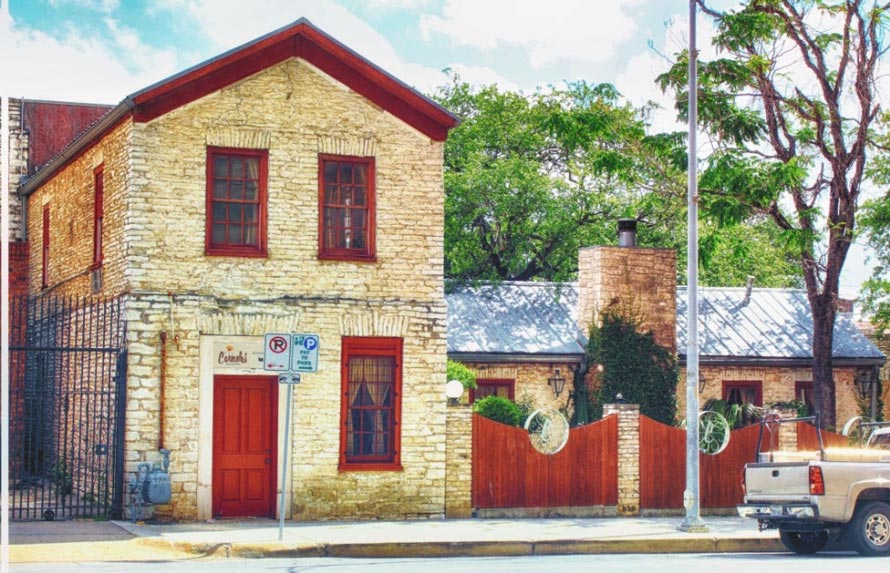
Our drummer arrived in Austin from Houston via the Houston & Texas Central Railway (H&TC). Needing a place to stay before heading west on the Austin & Northwestern Railroad, it is only natural that he would head over to the Depot Hotel on 5th Street, just a few blocks east from Union Station (H&TC, A&NW, I&GN – The old Union Station has long since made way for downtown development.). It was here that many drummers resided when in Austin, sharing stories and perhaps a bottle. When built in the early 1870s the hotel was just a block from the old depot between San Jacinto and Trinity Streets.
The Depot Hotel is a rambling stone structure consisting of a large two-story building with an adjoining one-story, two-room wing. Three wings of the building surround an interior courtyard. From the courtyard, a curved stairway leads to the second-floor balcony. Although not as elegant as the Driskill down the street (6th St. & Congress) and closer to Union Station, the old hotel was considered quite comfortable for its day.
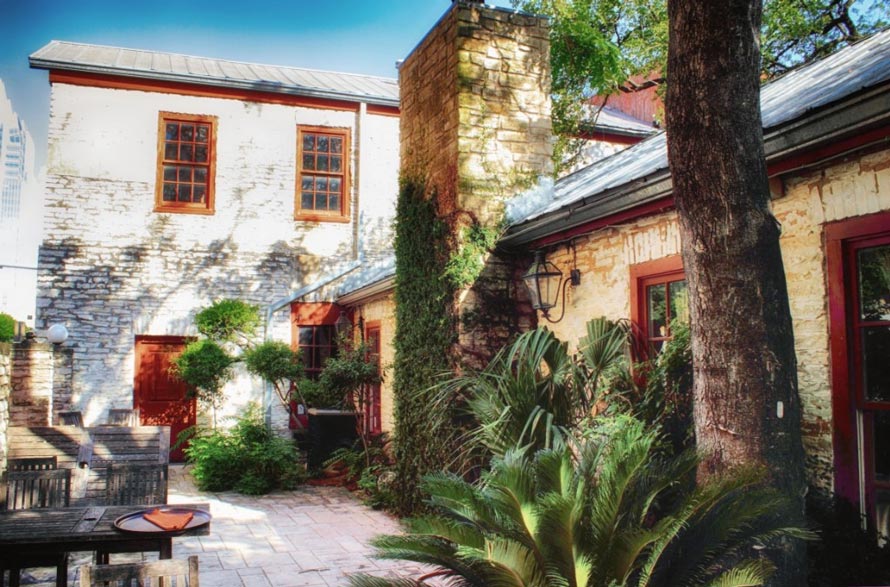
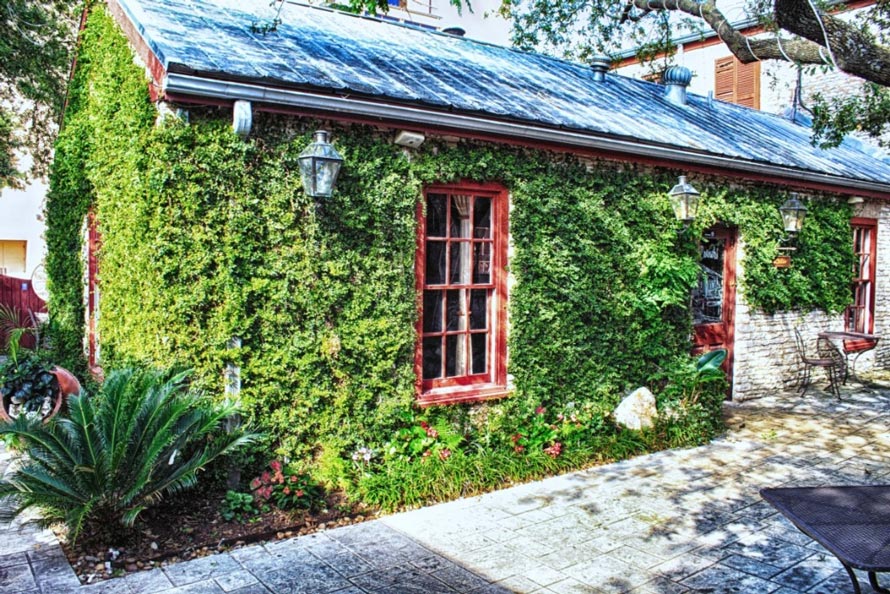
The hotel, known variously as the Depot Hotel, Schaeffer’s Boarding House, and the St. Louis House, began life in 1872 as the Railroad House, which it remained until 1878. The hotel was built by Carl Schaeffer between 1871-1872, on land originally owned by early Austin’s famous architect, Abner Cook. It can be speculated, although without any certainty, that Cook participated in the hotel’s design. The walls are twenty-four inches thick, constructed of locally quarried limestone. When built, the hotel served three railroads and four stagecoach lines. Most of the sleeping rooms (I have been told) were on the second-floor.
The hotel was purchased in 1964 by Mr. and Mrs. Glenn Moore Tooke, Jr. Before then it changed hands only rarely, with only one of its owners using it as a residence. After renovation in 1964 the hotel housed a popular Mexican Restaurant, “Mi Casa es Su Casa,” until it was purchased by Carmelo Mauro in 1985 to house “Carmelo’s Ristorante Italiano.” In the summer of 2017, the land which the restaurant sits on was purchased for redevelopment. Carmelo’s closed in Father’s Day, however, the fate of the building is not yet known. As the Depot Hotel is on the National Register (1966), one would assume that at least part of it will be preserved.
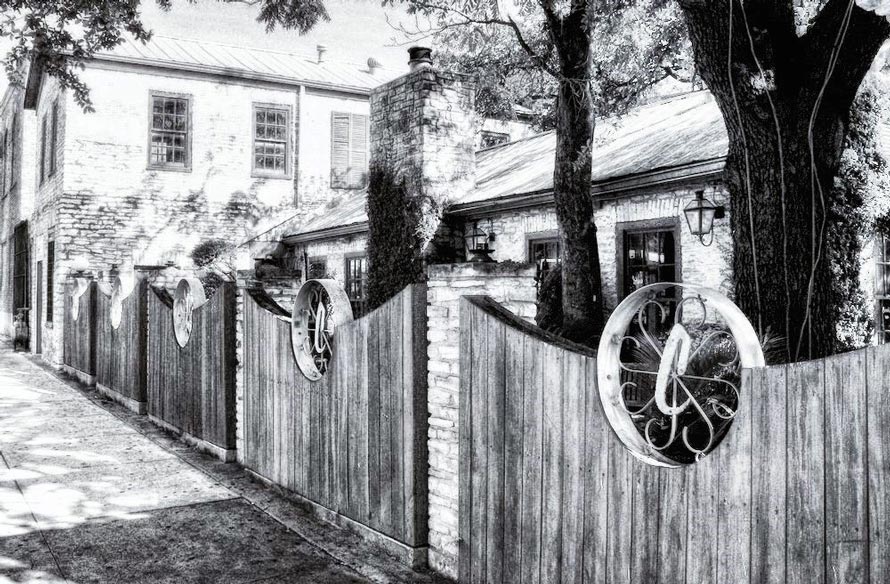
The Austin & Northwestern Railroad
The railroad drove the first spike, April 20, 1881, in Austin with the intent of connecting with the Texas & Pacific Railway in Abilene. It however never extended beyond Llano, some seventy-five miles distant, following a rather circuitous route from Austin through Leander, Liberty Hill, Bertram, Burnet (1882), and Kingsland to Llano (1892). There were branches to Granite Mountain (1885) and Marble Falls (1889). The Granite Mountain branch was built to transport pink granite from the mountain to Austin for the new state capital. When first built, the A&NW was built as a 3’ narrow gauge line, but was soon converted to standard gauge. In 1901 the Austin & Northwestern merged with Houston & Texas Central. With the merger, a new Union Terminal was built in Austin and a branch from Burnet to Lampasas (about 22 miles apart) was constructed (1903). With the merger, the A&NW extended east from Austin to Giddings operating over Houston & Texas Central tracks. Later a temporary branch was built from Rutledge to the Colorado River for the construction of Mansfield Dam (1937). The line was merged into the Texas & New Orleans Railroad in 1934, and subsequently into the Southern Pacific. In 1986 the entire 163 mile-long line (Giddings-Llano) was abandoned by the Southern Pacific, at which time the City of Austin purchased the line for $9.3 million. The Austin to Leander portion of the line is used for mass transit (CapMet). Freight service is still operated over the line, although there is little service beyond Elgin to the east of Austin and Marble Falls to the west. The Austin Steam Train Association operated excursion trains between Cedar Park, north of Austin, and Burnet. There has been talk of extending some of the excursion trains to at least Kingsland. Today, although currently known as the Austin Western Railroad, to locals the railroad is still the Austin & Northwestern (AWRR).
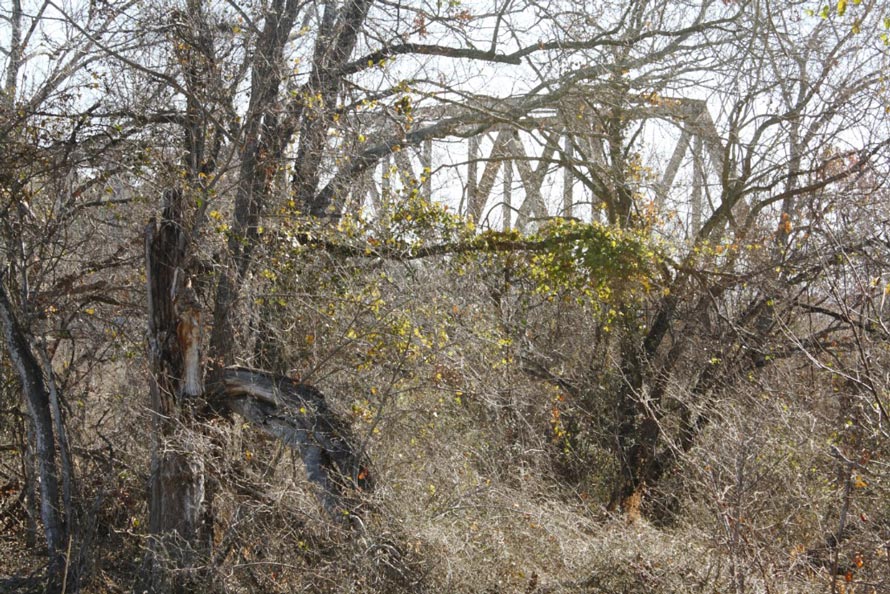
*A “drummer” is the colloquial name for an itinerant salesman who traveled the rails and stage lines, and in time the roads, looking to sell his wares. The name, “drummer,” comes from the habit of many early itinerant salesmen to beat a drum to announce their presence.
Frank Mills – Photographs and text Copyright 2017